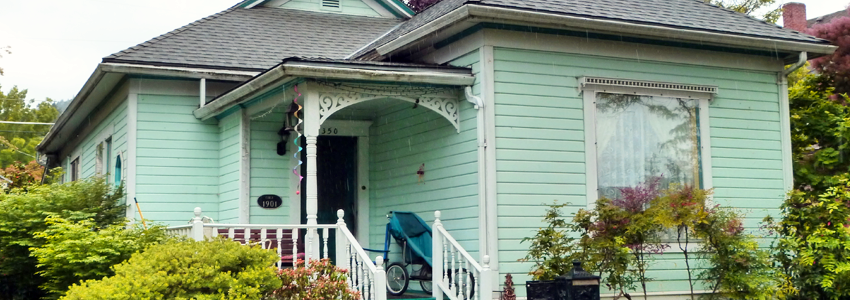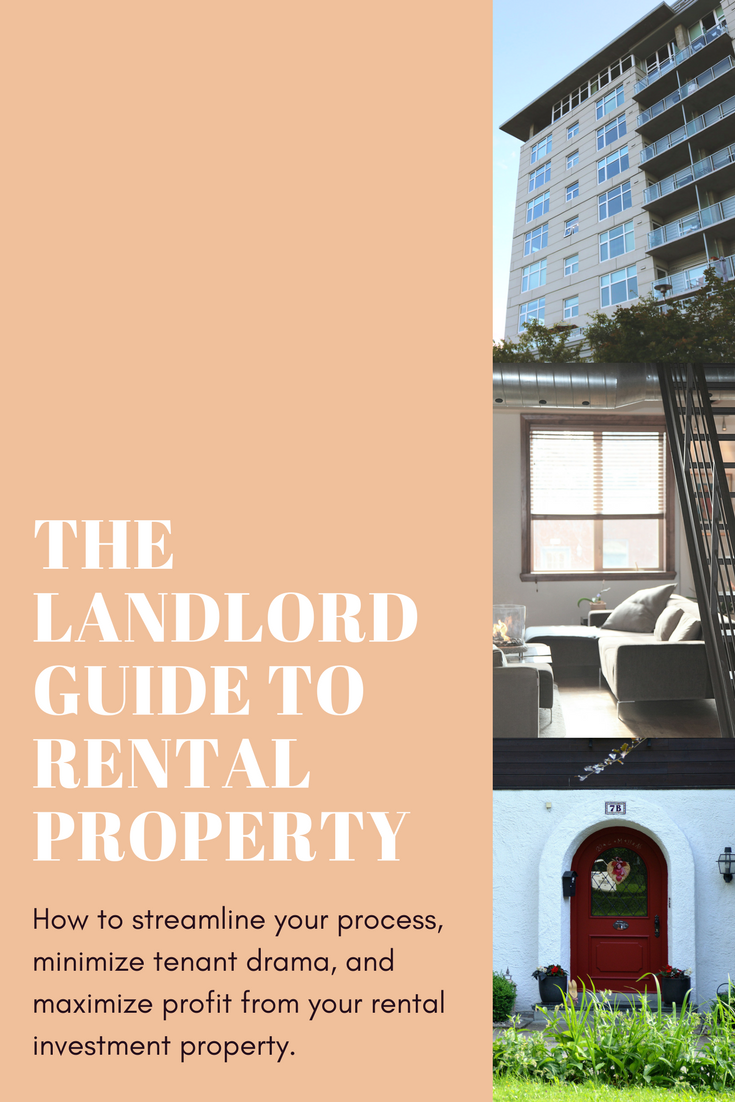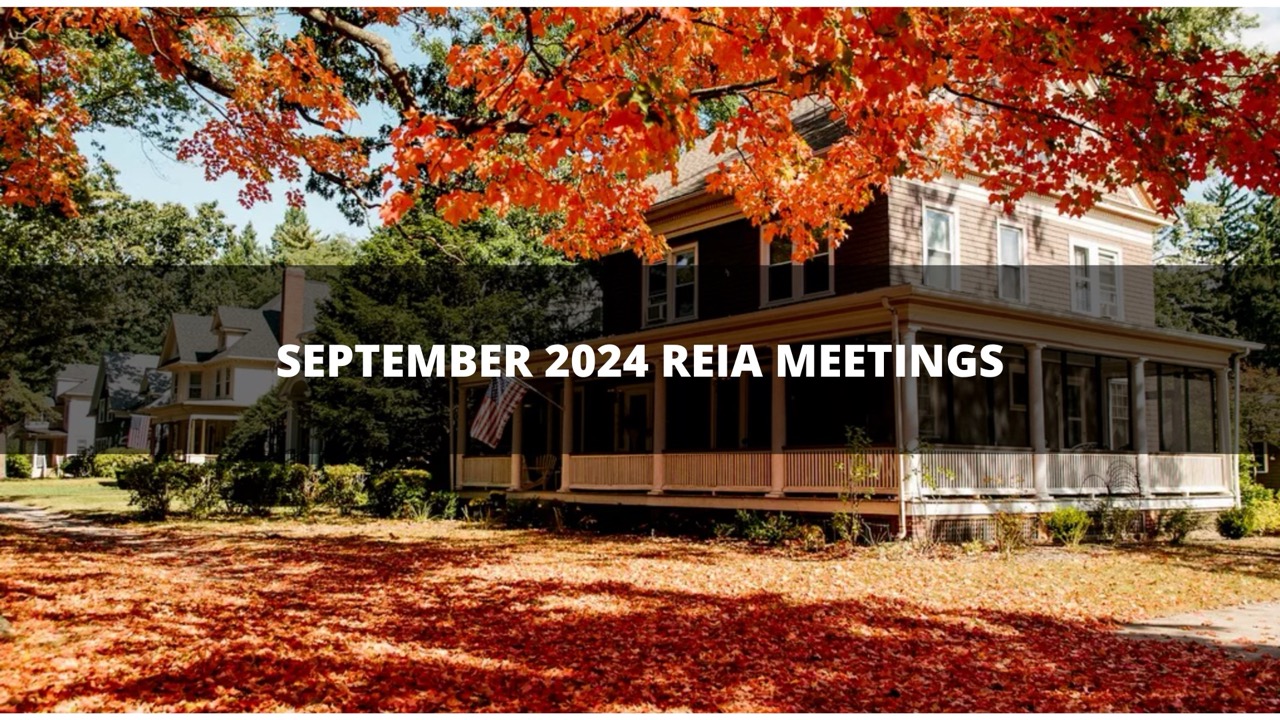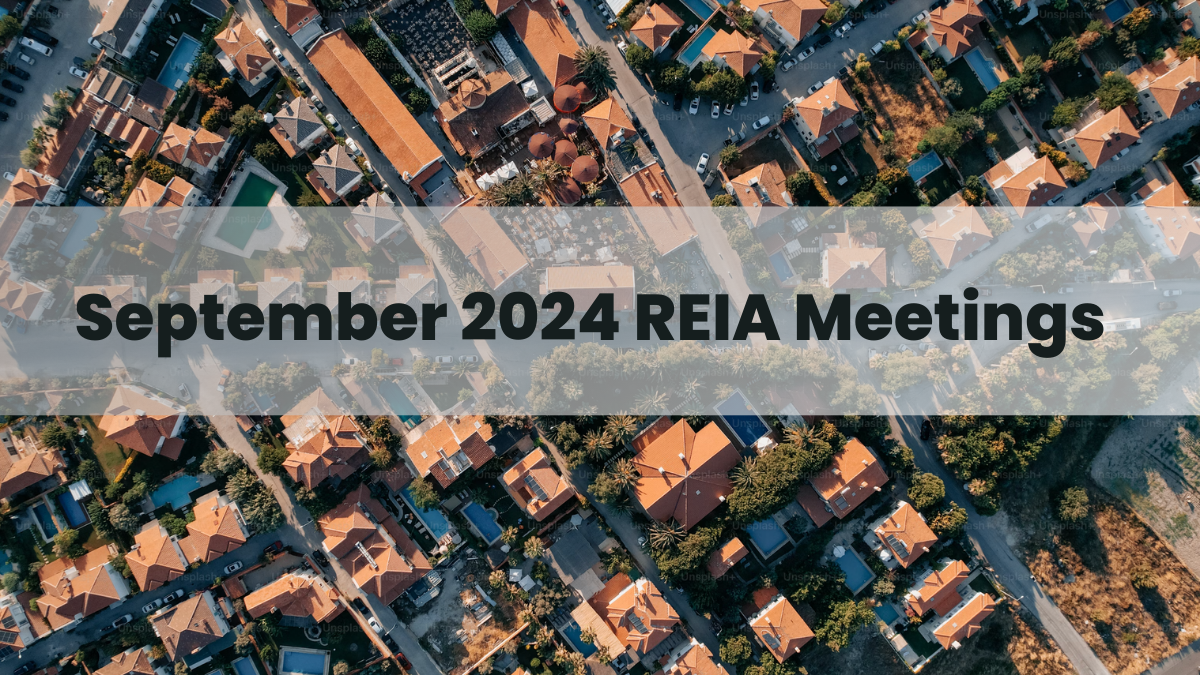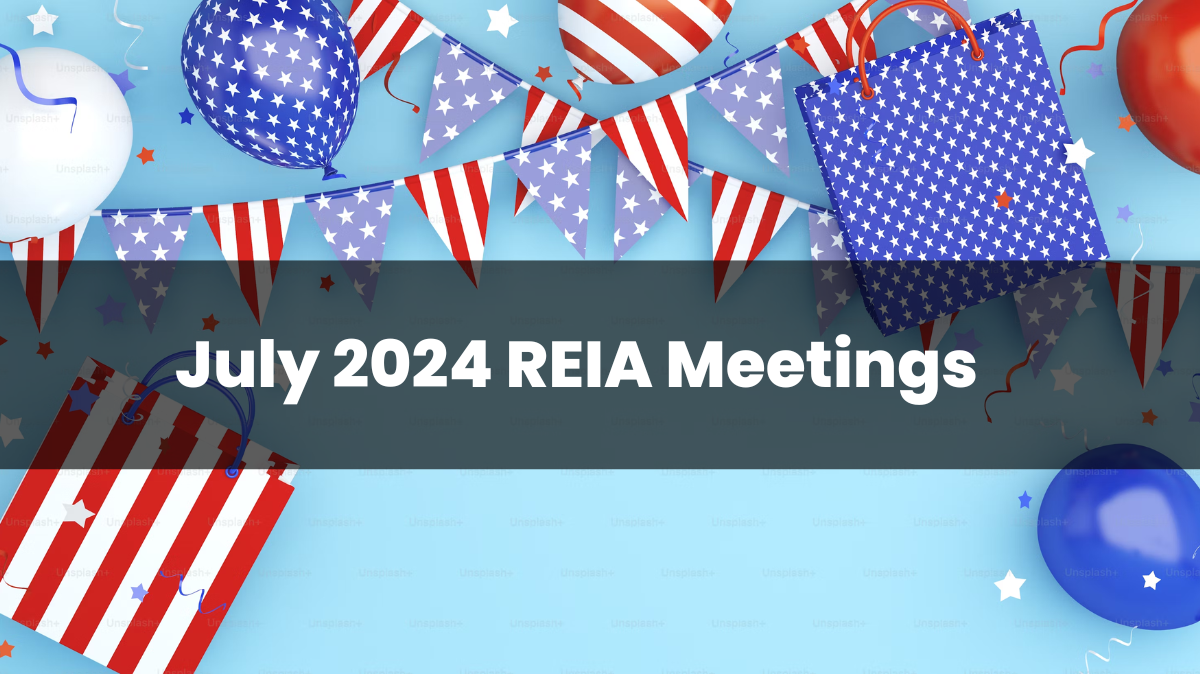Landlord Guide to Rental Property
We’ve all heard the rental property horror stories. We’ve heard about the 3:00 a.m. phone calls for busted pipes and broken toilets. We’ve heard that being a landlord can be a real nightmare. But frankly, it doesn’t have to be that way. As with most aspects of real estate investing (and in life!), if you are prepared and have a plan, you can often sidestep a lot of mishaps.
Whether you are contemplating making your property a rental, you are new to “land-lording,” or are a seasoned landlord, it’s time to take inventory of your process and make sure that you are asking the right questions. Let us help you streamline your process, minimize tenant drama, and maximize profit from your rental investment property.
Let’s get started!
What Makes a Property a Good Rental?
A good rental starts with making a good profit. Below are a few methods for calculating value:
Rent-to-Value Ratio
The ratio of rent to value can be a priceless guide and a requisite part of a thorough investigation of an investment opportunity. The thought behind this ratio (12 months of rent/home price), called “rental yield,” is that it is akin to the earnings-to-price ratio in the stock market: Higher earnings are associated with more profitable investments and are less reliant upon future growth in the stock price to generate expected returns.
The same idea applies to the rental yield: Higher rents make it less important for the property to appreciate in value in order to meet a certain expected return target set by the investor. However, rental yield alone, like the classic earnings-to-price ratio, is not a guarantee for a successful investment. It is necessary to look carefully “under the hood” at other considerations.
The highest rent-to-value ratios usually occur in markets where it is easy to add new housing. In these markets, rents rise while overall prices remain fairly stable. The higher the yield, the less friendly the market is for buyers.
Your best bet is to aim for over 6% yield in a market where vacancies are low.
Cap Rate and Monthly Cash Flow
There are two other ways to calculate the quality of the return on investment for rental investment properties. The first involves using the cap rate to determine if the ROI is in the range you need to make the deal worth it. The second is calculating your monthly cash flow. We will start with the cap rate.
Tip: If you are looking for rental properties in your area, try creating a free account on our site. Many deals include a rental value in their description.
Cap Rate:
The cap rate is the ratio of net rental income compared to the purchase price of the property.
To calculate your estimated gross rental income earnings, total up your rental income for the entire year, and subtract 5% for potential vacancies.
(Rental Income x 12) – (Rental Income x 12 x 0.05) = Gross Rental Income Earnings.
Next, add together all of your expenses throughout the year. Lastly, to calculate your cap rate, divide your net operating expenses by the purchase rate. Here are some examples to make sure you’re on the right track.
Cash Flow:
Most rental property investors are more likely to make a buying decision by looking at the monthly cash flow of their investment.
In order to calculate your monthly cash flow, simply add up all of your monthly expenses and subtract the total from the rental amount. Here are some examples to make sure everything checks out.
Condition of the Property
In general, the best types of property for rentals are single-family houses and condos.
The benefits of single-family residential houses include:
- Longer leases and tenant retention, since people usually live there a while,
- Faster appreciation than condos,
- Higher rent values since they are truly independent living units.
Most condos include HOA’s or other systems for exterior maintenance, leaving you to only worry about the interior.
When purchasing a rental, buy a property needing few repairs. Massive rehabs on a rental will quickly diminish your ROI. Try to buy properties that only need cosmetic repairs, and try to avoid buying a property as a rental if it needs major structural work such as foundation, plumbing, or significant water damage.
Generally speaking, a property needing a huge rehab makes a better flip and resell opportunity.
The best thing you can do to ensure a reasonable amount of repairs is to spend the money to get the property inspected during your option period—you won’t regret it, especially if the inspection brings to light an issue you didn’t see. (See below to discover the four types of inspections you need to do as a landlord.).
How much can I rent my property for?
As a landlord, you will need to determine rent that is fair for your market. You can use sites such as Zillow.com or Trulia.com to see what other properties rent for in that particular location, but for the most reliable comparables, work with a Realtor to find out how much similar properties in the neighborhood have recently rented for. You will want to compare your property to others with s similar location, size, fixtures, amenities, and landscaping.
Use these comparable properties to identify an average price per square foot. Then, multiply that price by the square footage of your property.
Give yourself a range with a high number and a low number. You don’t want to be greedy, but you want to cover your expenses (keep reading for more on this). No one wants to be a broke landlord!
What Are Your Expenses?
Set Expenses:
Mortgage: This is a regular payment and contributes to paying down the principal and the interest of the loan for the property. Mortgages can also include payments of taxes and insurances. Be clear on what your mortgage payment includes.
Insurance: There are a handful insurance options for landlords. Check out these four types of insurances that are all about protecting your property.
- Homeowners insurance: Coverage for a private residence which includes the structure of your house, your personal belongings, liability protection, and additional living expenses (if you have to vacate your home due to damage from a disaster). This insurance will cover damage caused by fire, windstorms, hail, lightning, theft, or vandalism. Floods and earthquakes are typically excluded.
- Landlord insurance: This policy covers the rental property with an option to cover the landlord’s belongings in the property. Damage to the property that are typically covered for casualties include: lightning, explosion, earthquake, storm, flood, fire, and theft.
- Umbrella policy: This is extra liability insurance (in addition to homeowners and landlord insurance) and may be beneficial if you own several rental properties. Coverage includes damage to the property, injuries, and certain lawsuits.
- Vacant property insurance: Vacant homes have a higher risk of damage such as vandalism, theft, arson, and water leaks. If you know your rental property will be vacant for a long period of time, this policy will protect the property. Check your homeowners and landlord policies for a vacant property clause. Some policies may protect a vacant property for 60 days, but then the property is left uninsured after that. Don’t get caught with your property unprotected!
Property Taxes: This is a tax on real estate. The tax is typically based on the value of the property, including the land, and is assessed and determined by the local government. The property tax is determined by multiplying the property tax rate and the market value of the property.
Homeowners Association: Neighborhoods often form a homeowners association. And as a homeowner, you are required to pay annual fees. These fees contribute to maintaining the value of the neighborhood.
Estimated Vacancies: It’s time to get honest with yourself. As a landlord, your property will be empty for some period of time. Of course, that is not ideal but it is manageable if you are properly prepared.
For those who worry about “losing thousands” because you couldn’t rent a property, it is important to remember that you haven’t actually lost anything unless you sold the property at a loss. The best way to alleviate the stress of having your property sit empty is to have a reserve of cash.
Extra Expenses:
Lawn Care: If you have an immaculate yard, you may want to pay to have the lawn maintained on a monthly basis. Renters tend to take less care of the lawn than an owner will. Decide who will be responsible for yard maintenance and include it in the lease.
Home Warranty: A home warranty typically falls on the responsibility of the homeowner. You are paying to protect your home. Renters are not expected to do so. This covers specific appliances or systems in the house.
Security System: If a security system exists at the property, it is the choice of the tenants to have it activated and therefore take on that cost. Installing a new alarm system is also typically covered by the tenants. If your property is in an area where there has been crime, it may be worth swallowing the cost of a security system to attract tenants who will actually stay.
Pest Control: If there is an issue, such as termites, that can cause serious damage to the property the cost will fall to the property owner. Tenants aren’t concerned with the long-term condition of the property, but you should be.
Pool Maintenance: You can leave this responsibility to the tenant but if you are at all concerned about a tenant keeping up this duty, include the cost of this maintenance in your set expenses for the property.
Repair Expenses: It’s inevitable. Something will break, eventually. Whether it’s an air conditioning unit that needs to be replaced or a leaky roof, you want to be prepared for any repairs that arise. Consider this for your cash reserve.
How Much Should I Keep in Reserve?
Having three to five months of mortgage payments in reserve will soften the blow when there is a month or two where your property sits empty. Having this amount in reserve will also allow you to take the time to find the next right tenant instead of rushing a tenant in the property just to have the next mortgage payment covered.
What is Your Potential Income?
Potential income typically comes from two places:
- Your rent is greater than your expenses.
- Taxes. The benefits of deductions often outweigh the taxes, leaving you with very little to no tax due at the end of the year.
Preparing to Rent Your Property
So you know you have a good rental, figured out the rent price, and decided to manage the property. Now it is time to make sure your property is rent-ready!
Photos
In this digital age, it is essential to have photos of your rental property. Make sure that the house is clean, decluttered, and share photos of the inside and outside of the property. Renters make a quick decision based on photos. Don’t let poor photos impact your ability to find renters.
You may even want to make a short video as a walk-through of the property. The more potential renters can see the property, the more likely that they will reach out if they are interested. The more upscale the house and the area, the more you need to do to show the property well.
If you take your own photos, consider using a photo editing website like Pixlr to brighten the images, add saturation, and crop photos. The first photo in your listing should be the best one, since this is what will be used when the property shows up in searches.
List the Property
Using a real estate agent will help you price the property better and give you access to more resources and marketing avenues. But if you don’t want to go that route, you can market the property yourself.
List the property on Craigslist or Zillow Rental Manager (formerly Postlets), which distributes listings to Zillow, Trulia, HotPads, and other top rental websites. Craigslist is better for lower income properties, but since Zillow Rental Manager is free, it’s a good idea to post on both websites.
Include a detailed description of the property and all of the visuals (photo and/or video). Explain the best way for potential tenants to contact you about the property.
There are four types of inspections you should do as a landlord:
- Move-in Inspection: This inspection, of course, is conducted during the move-in process. It must be conducted by the tenant and it must be documented. So, as part of your move-in package, you will have a “move-in” inspection sheet(s). Once the inspection is completed, the tenant should sign and date the document and hand it back to you.
- Routine Safe and Clean Inspections: This is exactly what it says—a routine inspection, performed by you to ensure that the property is safe and clean. This inspection should be conducted every three to six months; go any longer and you may lose control of the overall condition of your property. Realize that when you are conducting this inspection, you are looking for issues that the tenant has caused, such as pulling a door off its hinges, and those items you are responsible for such as a leaky faucet. Again, this inspection is documented, supported by pictures, and signed by you with a copy provided to the tenant.
- Drive-by Inspections: This inspection needs no pre-notifications. All you’re doing is driving by and observing. If there are issues observed on the outside of the property (for example, seeing a pet when they are not allowed), you should notify the tenant (in writing) and schedule a “safe and clean” inspection.
- Move-out Inspections: The “move-out” inspection is your opportunity to determine the overall condition of the property when the tenant moves out. This inspection should be conducted by you at the time you receive the keys from the tenant. The only way to protect yourself is to conduct that inspection with the tenant in the property.
Finding Good Tenants
Tenants can make or break the experience as a landlord. Do your part. Set requirements and stick to them. Maybe you don’t want pets on the property or you don’t want more than four people living there.
Whatever your provisions are, define them and own them. Standard requirements may save you from a rash decision that you’ll regret later. Remember, you are running a business.
How to Screen for Tenants
Require proof of income: Be sure to establish a required income before you even start looking for tenants. A general rule to follow is the 30% rule. The rent plus utilities should not equal more than 30% of a potential tenant’s income. To figure out a potential renter’s income, simply ask for it in the application process. This is standard.
Conduct a credit check: This will provide you with two insights. 1. How much your prospective tenant owes (basically, what else they have to pay during the month) and 2. Your potential tenant’s track record for making payments on time.
Conduct a background check: It is worth the time and money to conduct a basic background check. This may quickly weed out applicants. Remember, a potential renter will be living in your property.
Conduct a reference check: Require landlord references as well as personal references. This will highlight any red flags about a potential tenant’s rental history. Personal references will provide additional insight that is often hard to capture in a standard rental application.
What You Should Include in Your Lease
Length of the Lease: Commonly, leases are for 12 months but they can range from month-to-month to two years. This is up to the discretion of the landlord. You also need to decide what happens after the lease is up. Will the lease default to month-to-month or will the tenant need to sign another lease?
Security Deposit: Determine how much of a security deposit you will collect. Often it is the same amount as one month’s rent. This deposit will cover any damage done by the tenant, as explicitly stated in the lease.
Rent Payment: You need to include the amount of payment that is due each month, the day of the month it is due, and the amount for a late fee. Determine how you will accept rent payment. Tip: Direct deposit can be a great way to ensure that payment happens on time and you won’t have to deal with personal checks.
Pet Policy: Determine your policy on pets. Be clear about what type or number of animals are allowed. Determine a pet fee and be clear that a pet fee is non-refundable and any other damage from a pet will be taken out of the security deposit.
Utilities: Clearly define who is responsible for paying which utilities.
Smoking: Be crystal clear in the lease about whether smoking is allowed in the house or on the property.
Maintenance: Define in detail how repairs will be handled. Who is the first point of contact when the tenant has a maintenance issue? If it is you the landlord, state that.
Sub-Lease: State your policy on subletting. Do you want your tenant to allow someone else to live on your property without your permission? If the answer is no, be clear about this.
Early Termination: Although it’s not ideal, tenants may leave before the agreed-upon date on the lease. Decide how you want to handle tenants leaving early. You may require a 60-day notice and two months’ rent for leaving early.
Here’s a sample lease agreement if you don’t have one already.
Building a Great Landlord/Tenant Relationship
The Number One Rule: Treat your tenants as you would like to be treated. These individuals are living on your property and it is in your best interest to maintain a happy relationship with them. As a landlord for an investment property, you are running a business and your tenants are your customers. Keep customer service best practices in mind.
Tenants’ Rights: Tenants have the right to live in a safe and habitable environment. This includes overall protection from the elements, electricity, running water, etc. Tenants also have the right to not be discriminated against for their race, sexual orientation, religion, etc. Tenants’ rights may vary state to state. Become familiar with your state’s policies, and respect those rights.
Raising the Rent: It is common to raise the rent at a lease renewal or when a tenant leaves, before a new tenant moves in. This can be a case-by-case decision. You may have ideal tenants and prefer to keep them on your property instead of collecting an extra $25 dollars a month.
What Happens if You Have Problems with Your Tenant?
Unfortunately, if you encounter a problem with your tenant, you can’t simply throw them out of the property. You also can’t turn off water or electricity to try to get them to move out.
The best way to ensure that you are protected is to have a thorough lease. Proving that the tenant violated the lease agreement will make the eviction process easier.
If you need to evict a tenant, follow these steps:
#1: Know your rights (and theirs)
Before deciding on a course of action with a tenant, know what your responsibilities are as a landlord. If you fail to do any of the following, you will lose your leverage in future disputes:
Landlords are responsible for keeping rentals in habitable condition—meaning that you should be making regular repairs to the property and responding to service requests by your tenants. Ignoring these requests can get you in hot water legally.
Research your state and local law and make sure you are following regulations in your area for electrical wiring, lighting, and ventilation.
Additionally, make sure not to enter the property without notifying your tenant—or you could be subject to a lawsuit.
This website is a great resource for understanding the Residential Landlord and Tenant Act, which outlines in great detail what your responsibilities include.
#2 Don’t Perform “Self-Help” Evictions
Self-help evictions are a nickname describing evictions you take into your own hands. Removing the tenant’s stuff from the property, locking them out, shutting off utilities, and harassing the tenant are all illegal in every state.
#3 Document Valid Reasons for Eviction
Refer to your lease agreement and identify what part of the agreement was broken. Did they fail to pay rent? Did they get a dog when the lease prohibited it? Did they cause major damage to the property? Did they cause major safety hazards? Take photos and document everything.
#4 Give Notice
In order to evict your tenant, you have to give formal notice letting them know that you plan to evict them if they don’t do X, Y, and Z. Let them know specifically what they need to do, and by when, in order to avoid being evicted.
#5 File the Eviction
The next step is to file the eviction notice with your local courthouse. At this point, a hearing will be scheduled and the tenant will be notified. Make sure to bring any documentation with you when you file the eviction—photos, documented conversations, etc.
When you attend the hearing, you will want to bring as much information with you as possible: the original lease agreement, bounced checks, any communication records you have, records of payments you did receive, and the dated proof that the tenant received the notice of eviction.
#6 Evict the Tenant
Assuming the court’s decision went your way, the next step is to evict the tenant and collect past-due rent (if there is any). If the tenant doesn’t leave on time, a sheriff can escort them out.
Unfortunately, you won’t be able to collect past due rent unless you file in small claims court, unless your local court allows you to combine the eviction with a small claims lawsuit.
Ready, Set, Go!
Looking for rental properties? Start by looking for discounted investment properties in your area!
Now you are armed with the questions to ask and the answers to look for to manage your rental property. Deciding to rent your property requires a little math, a little planning, and a little common sense. You are running a business and need to keep that in mind as a landlord. Succeeding as a landlord is one step toward succeeding in the real estate investing industry. Review the following takeaways as you take on managing your first (or next) rental property!
Top 8 Rental Property Takeaways
- Take the time to calculate the rent-to-value ratio, cap rate, and monthly cash flow.
- Set yourself up for success by having the numbers back your decision to rent out your property, while keeping in mind the location and condition of the property and type of renter it will attract.
- The idea of monthly cash flow is attractive. Be certain to add up all of your expenses and potential expenses; make sure your cash flow will be positive (or at least break even), not negative.
- Grow a reserve of cash for unexpected expenses, such as the property sitting empty for a month or two.
- To find the best tenants, use quality photos, list your property, and complete all inspections. When you find a potential tenant, be picky.
- Screen your tenants and when you find one that fits, move forward with a very clear lease.
- Don’t forget the golden rule: Treat your tenant as you would like to be treated. It’s pretty simple.
- And lastly, if you treat them well and they don’t do the same to you or your property—evict them. (Legally).
What lessons have you learned from being a landlord? Comment below to share your experiences.

